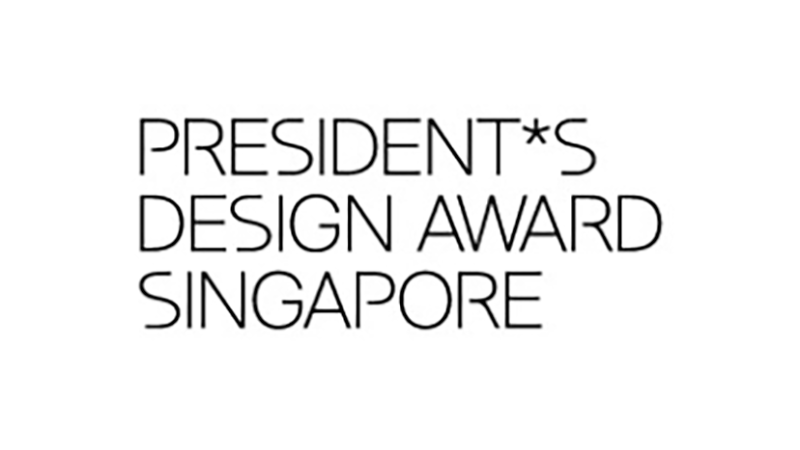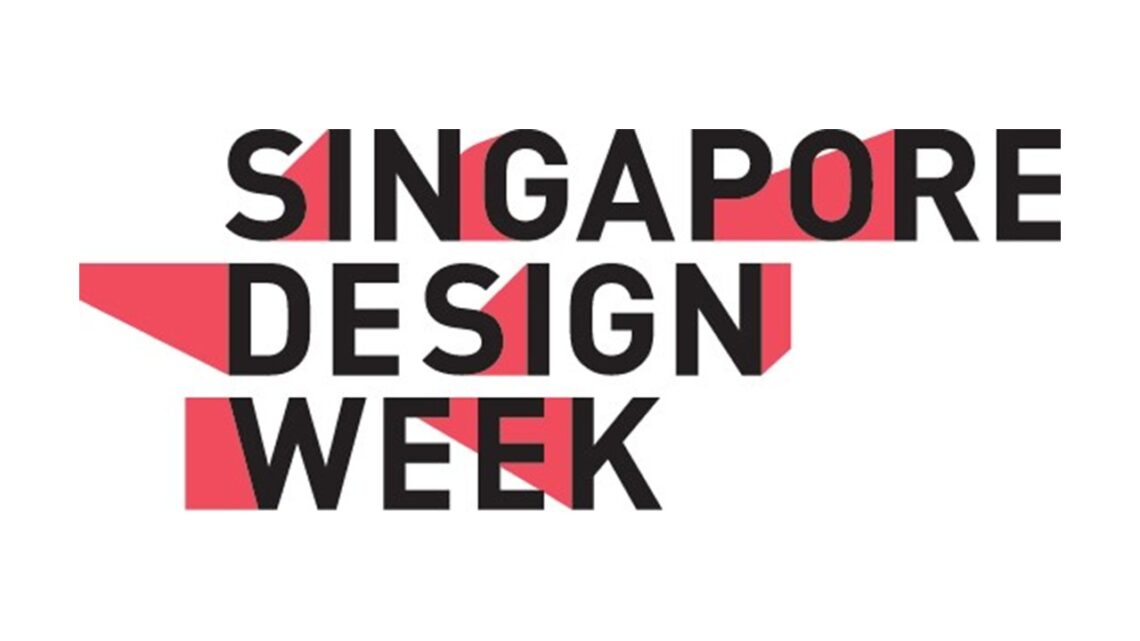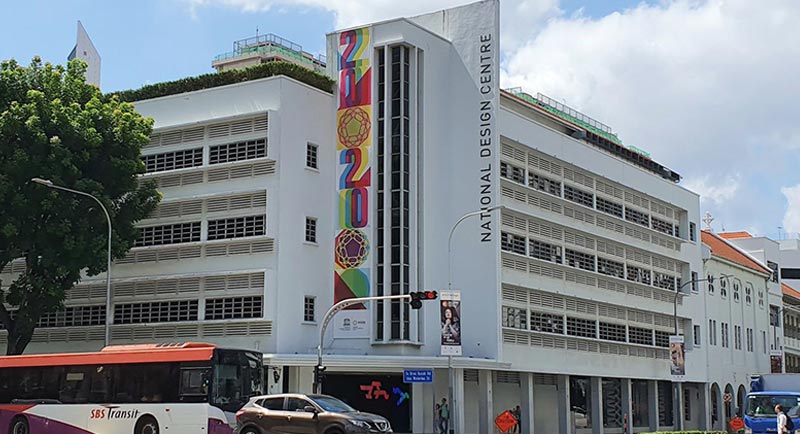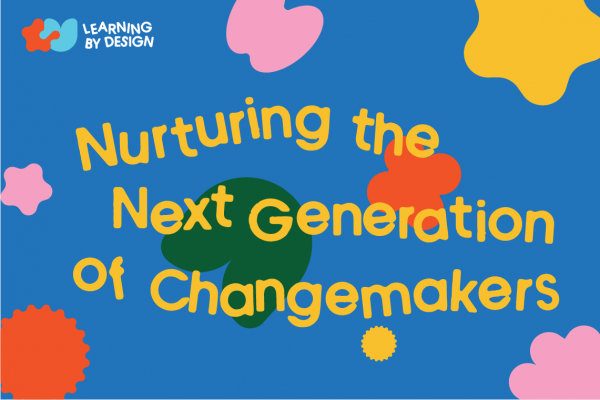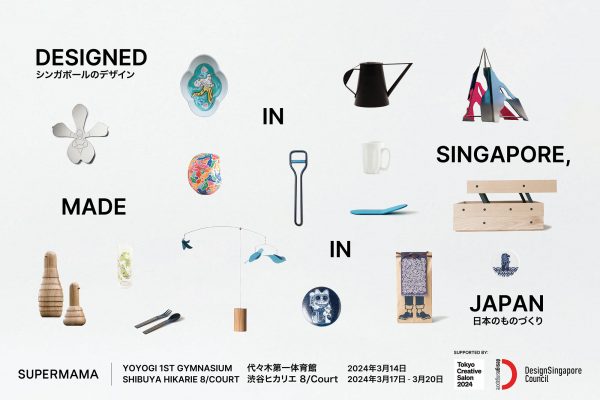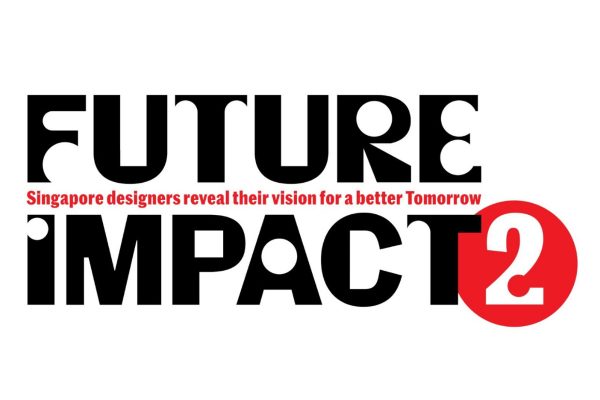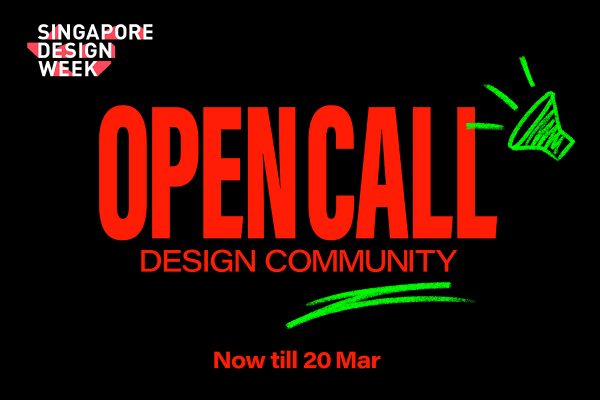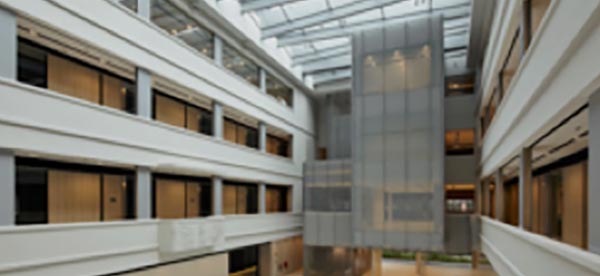How do we perceive of lines, space, and even fabric? What sorts of forms are possible with three-dimensional automated knitting? How can the weaver’s skills be transferrable? For Dsg Scholarship recipient and Singapore Design Week exhibitor Tiffany Loy, the world of weaving and textile creation is a perpetually emerging practice propelled by questions, analysis, and possibility.

Article by Narelle Yabuka.
The creation of textiles is one of the oldest human endeavours. The logic and method used to build these ubiquitous materials – weaving lines of thread together – has never fundamentally changed, and nor will it. So how is it that textiles can offer a perpetual wellspring of potential for exploration, innovation, and fascination?
Tiffany Loy is probably the best person in Singapore to ask. She ignited much curiosity and conversation in Milan earlier this year with a series of abstract machine-knitted volumes, which she presented with the Singapore University of Technology and Design’s (SUTD’s) Digital Manufacturing and Design (DManD) Centre, in the exhibition Future Impact.
Organised by the DesignSingapore Council (Dsg) and shown upon the global stage that is Milan Design Week, Future Impact explored the manifestation of future-focused thinking via Singapore design. For Loy, it was the ideal platform for an investigation of complex textile construction and its potential in a future that is often looked upon through the lens of new additive manufacturing techniques, such as 3D printing.
Her question: Could computer-controlled knitting or weaving be an alternative mode of production to 3D printing, and if so, what new possibilities for form-making could be opened up by it?
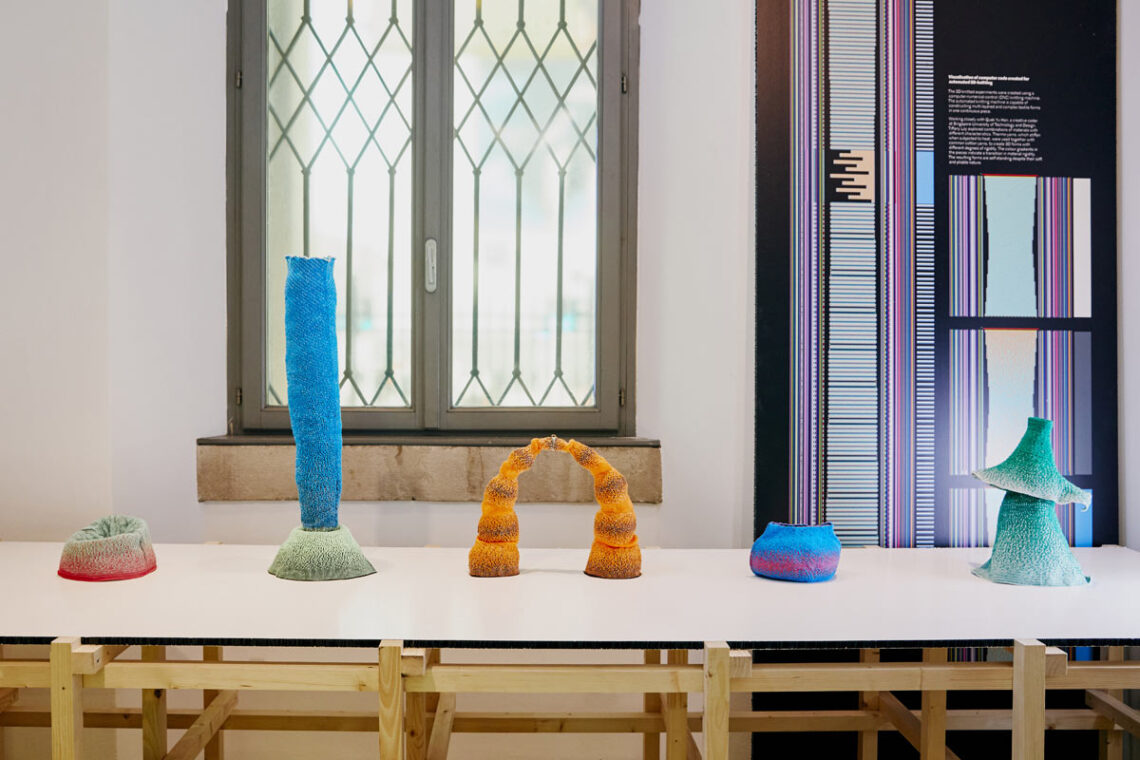
A new vocabulary of form
“My practice is based on textile construction as a means of building,” Loy explains of her work. The woven objects she presented at Future Impact, which she titled Building Futures Line by Line, were produced with creative coder Quek Yu Han (a researcher and computational designer at DManD) on a computer-numerical-control (CNC) knitting machine that is able to construct multi-layered and complex textile forms in one continuous piece. Together, Loy and Quek tested various codes and combinations of yarn with different characteristics in what Loy describes as a “creative tango” between coder, designer, and machine.
The outcome was a fascinating collection of self-supporting yet pliable forms. They were built using a mix of soft cotton yarns and thermo-dynamic yarns that stiffen slightly when heated, knitted in gradient patterns that produced softer and stiffer areas within each object. Loy explains, “I really wanted to see what lexicon of form could be created from this technology. We produced long forms, round forms, and conical forms. From these, you could build a vocabulary and then technically, you could build all sorts of things.”
Loy encountered much curiosity from visitors to Future Impact, who were keen to understand the potential. “I had an interesting conversation with someone who is doing his PhD in nanofibers. There was another conversation with someone working in the automotive industry, who is looking at materials that can stretch in different ways,” she says.

At the show in Milan, everyone was asking me, ‘What is this, actually? Is it a decorative thing? What can it be?’ My response was always, ‘What do you think it can be?
– Tiffany Loy

Loy can imagine special stockings and shoes, or seats with different degrees of stretch, among the applications for such composite structures. “The team at SUTD has already created amazing tentage structures that make use of the varying tension in the materials. That’s a natural application,” she says, “and there’s proof of concept for that already. So I wanted to be a bit more theatrical and whimsical with what was shown in Future Impact, to expand imaginations.”
She certainly succeeded, and Singapore audiences will have the opportunity to encounter Building Futures Line by Line for themselves when Future Impact has its homecoming showcase at the National Design Centre, opening during Singapore Design Week (SDW) 2023.

If an architect’s tools are space, light, and volume, then a weaver’s tools are lines and the intersection of lines. It is one of the oldest ways of building. It has always been, is still, and always will be. It’s just that now, we are using creative coding to build.
– Tiffany Loy

Seeking the path less trodden
Loy’s investigation with Quek provides a strong indication of how she approaches her practice, and following suit, if you view her entire portfolio of work and the trajectory of her creative career, you’ll notice a breadth of deep explorations and contemplative outputs that defy typical modes of categorisation.
This suits Loy just fine. She trained in both industrial design (at the National University of Singapore) and the arts (weaving – at a vocational school in Kyoto and later at the Royal College of Art [RCA] in London), she exhibits in the contexts of both design and art, and she currently holds a teaching position (Adjunct Assistant Professor) at the NUS Division of Industrial Design.

Loy is reluctant to apply labels to what she produces. This includes work for clients – rugs, for example – in accordance with technically driven creative briefs, which would typically be aligned with the term ‘design’; exploratory exhibitions, which would typically be aligned with the term ‘art’; and a mixture of the two. For example, she has been approached by architects to produce custom textiles for residential settings. In such cases, she may be asked to precipitate certain qualities, such as semi-translucency between rooms. “Something like that does feel like an art intervention, but it’s also very much like design,” she says.

For me, it’s not so much about being an artist or designer as an end goal, but rather, I focus on whatever leads me to exciting opportunities.
– Tiffany Loy
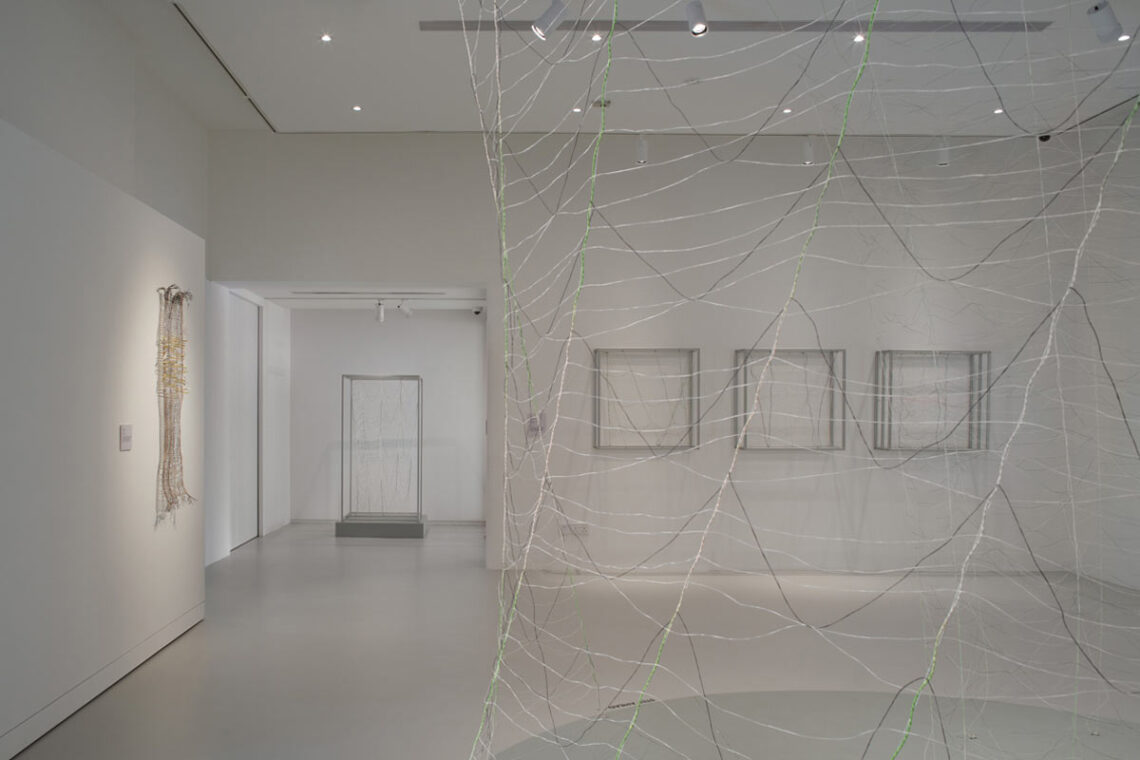
In Singapore there are few practitioners taking a similarly varied path with textiles, but the nascency of the contemporary textile ecosystem here means that practitioners such as Loy can – in fact, must – flow between focal areas. More significant for Loy’s practice than the nomenclature applied to it is the presence of a questioning mindset – an analysis of the nature of what she is producing, its components, how we perceive it, and what it could do.
This inquisitive outlook is clearly innate to Loy but was certainly intensified by her master’s studies at RCA, which she embarked on with the support of a Dsg Scholarship in 2018. “In Singapore, it’s not like you can drive out of town and visit a mill, so the only way to expand my knowledge was to go overseas,” she explains. “My education at RCA really helped because it showed me what other forms of art and design there are, which I had not seen in Singapore,” she adds.
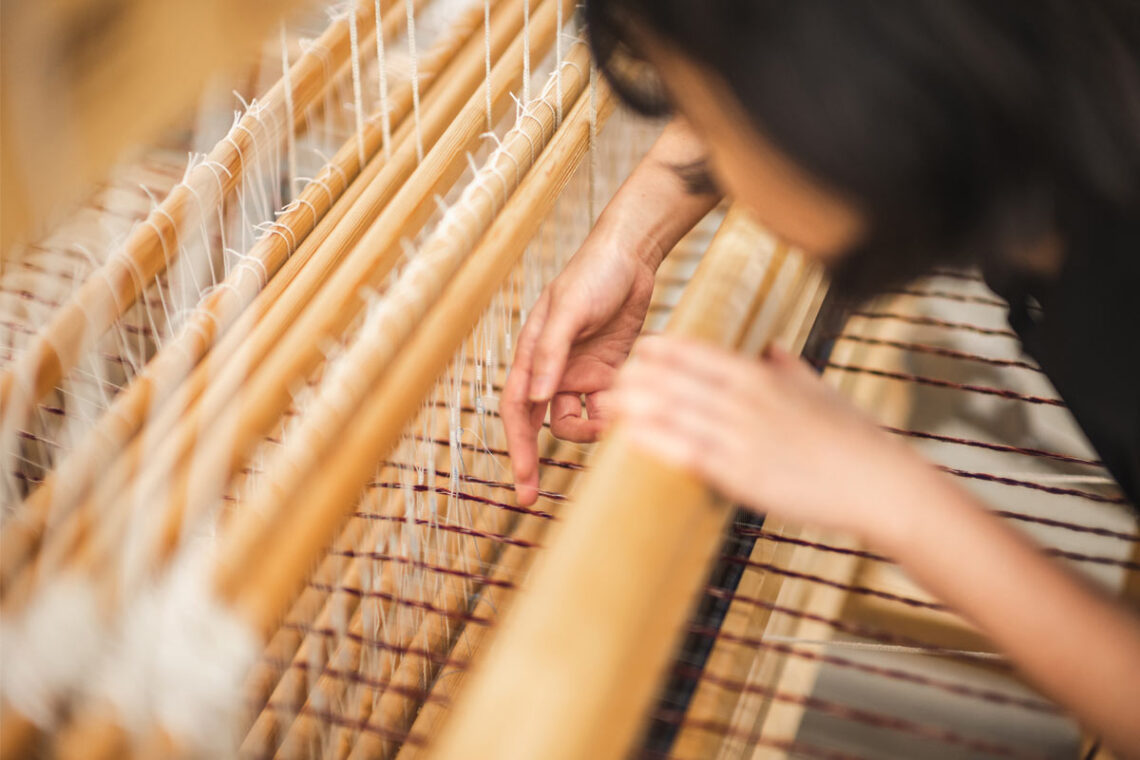
While honing her practical skills, Loy was also pushed toward conceptual exploration. Contemplating lines, textiles, and space under the tutelage of a visiting professor from the Architectural Association School of Architecture, she developed an interest in exploring how we see and perceive: What makes a surface? How many lines make a barrier? How can a surface be three dimensional?
She was able to explore the latter question toward the end of her studies when the opportunity arose, via Dsg, to exhibit during London Craft Week 2020. With Dsg’s support, Loy developed a large-format installation for the hotel citizenM Bankside. Titled The Weaverly Way, it was a sculpture developed with a weaver’s approach – a pliable twisting column that rose up the centre of a spiral staircase, presenting colour in a way that was dependent on the viewing angle. It was Loy’s largest woven work to date and represented a milestone in the development of her creative career.
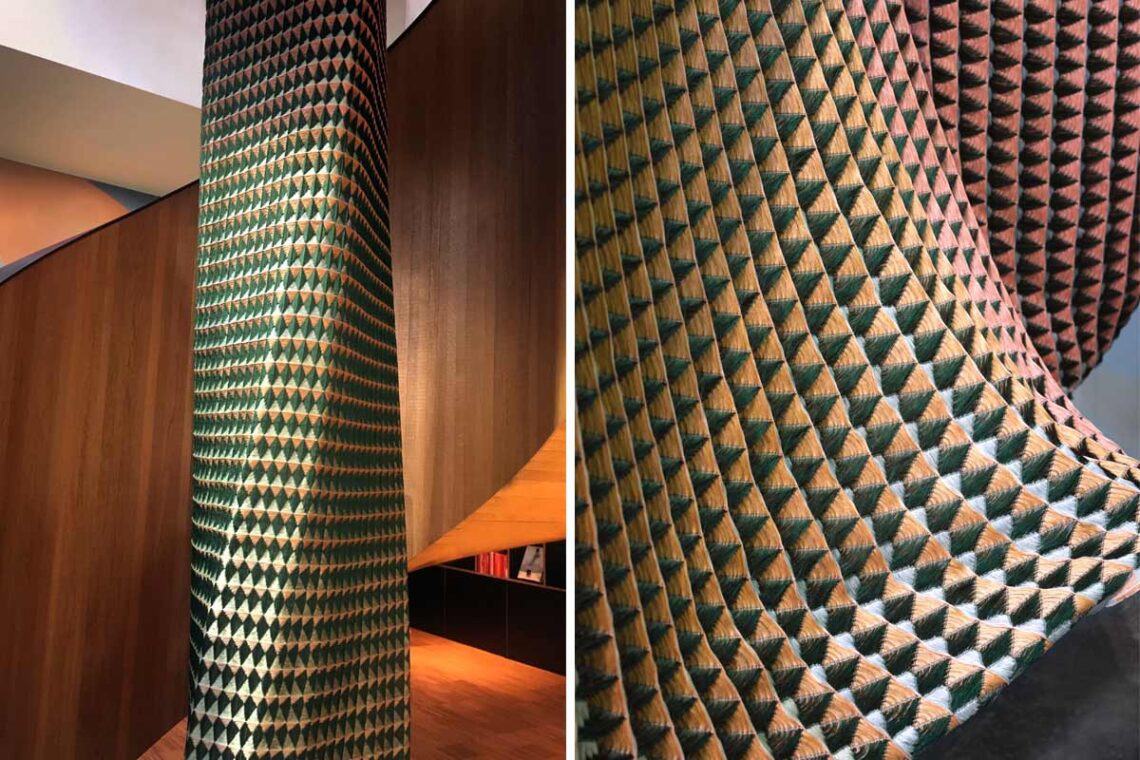
In 2022, she presented the textile to her home audience at Dsg’s inaugural exhibition of Southeast Asian design talent, EMERGE (curated by Suzy Annetta), but this time in a format that scalloped across a wall giving a different reading of the depth of the textile’s surface. Based on her positive experience of the 2022 show, which yielded follow-up from intrigued visitors, Loy will exhibit at EMERGE again during SDW 2023. Taking a pared-back approach this year, she will present smaller handwoven pieces that are derivative of The Weaverly Way but embody different material choices and effects. “These pieces are a lot more restrained,” she says, “but hopefully they will command more attention, because they are more subtle.”
Regardless of scale or context, and no matter whether she is using her hands on the loom or code in the CNC knitting machine, Loy’s analytical approach results in perpetual investigation, which extends to her own modes of practice. While producing contemplative forms, she also actively weaves the structure of her career, ever aware of her own trajectory and the edges of her practice.

If I didn’t use the loom anymore, would my skills and thinking be irrelevant? Would everything I know be useless? Surely that’s not the case; it’s up to me to decide how to transfer them.
– Tiffany Loy
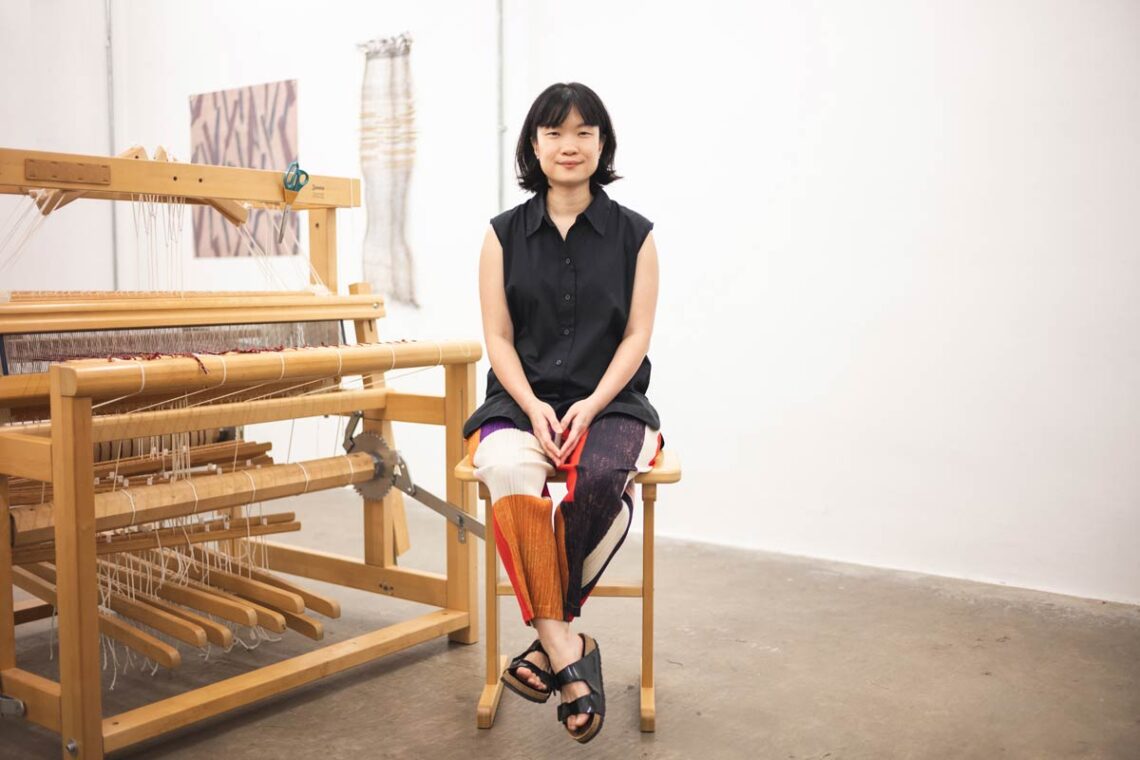
Read our unfolding series of stories on creative discovery and making life in Singapore ‘Better by Design’.
